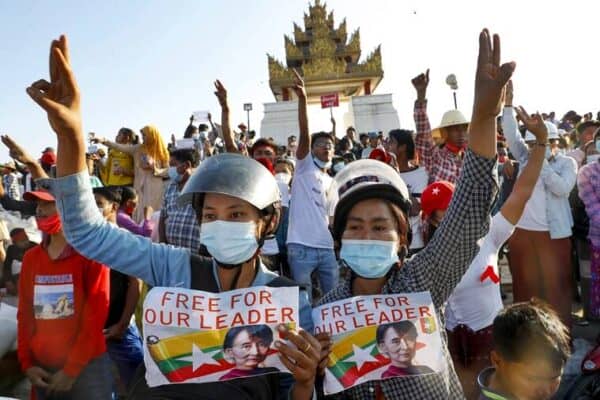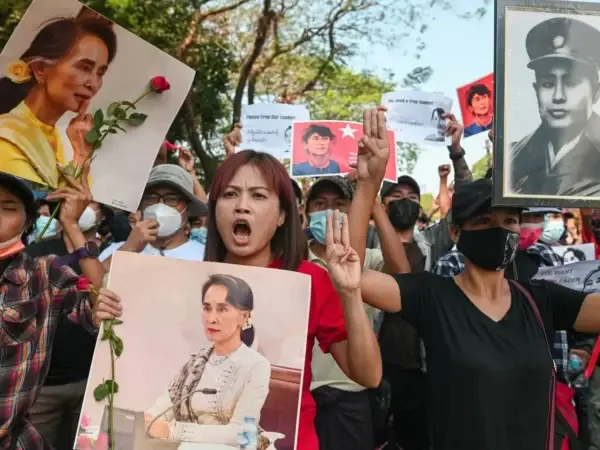Suzanne Collins ‘The Hunger Games‘ ‘trilogy has been blowing readers‘ minds since the first novel was published in 2008. As soon as it hit the shelves, the book leaped straight to the top of the bestseller’s charts and stayed there for more than a hundred consecutive weeks.
The following two installments in the series, Catching Fire and Mockingjay, enjoyed similar success. And then, of course, Hollywood stepped in and adapted the books to the silver screen.
The multimillion-dollar Lionsgate movie franchise introduced an entirely new set of international readers to Katniss Everdeen’s dystopian world. It secured its place as an evergreen and one of the most beloved YA series.
But despite its YA categorization, you don’t need to be ‘Young‘ to fall in love with The Hunger Games books. I first read them in my mid to late 20s, revisiting them almost a decade later.
A Quick Recap of the Series
The Hunger Games shook the world as few other book series have. You’re probably at least loosely familiar with the story unless you’ve been living under a rock for the past couple of decades. But for those initiated, let’s have a quick recap.
The series begins with Book 1: The Hunger Games, where we enter the dystopian world of Panem. Here, society is divided into districts and ruled over by the oppressive and all-powerful Capitol.
Our heroine, Katniss Everdeen, lives in District 12 with her mother and younger sister, Prim. Katniss is fiercely protective of Prim, so much so that she steps in to take her place when she’s selected for the 74th annual Hunger Games.
This chilling battle-royale-style event takes one boy and one girl from each district chosen by a lottery. It is reminiscent of Shirley Jackson’s famous short story.
The children are taken to a vast arena where they’re forced to fight each other to the death over a number of days and weeks. There can only be one winner, and the competition only ends when all other remaining contestants are dead.
The citizens of Panem watch on through their television sets as these young ‘tributes‘ use every ounce of their physical and mental endurance to survive.
The Hunger Games Three Finger Salute

The Three Finger Salute is a powerful expression of defiance that appears in both the books and the movie franchise, so what is it, and what does it symbolize?
I’ll explain to you in the post everything you need to know about the salute, including its early origins and its appearances throughout the story. Plus, I’ll explain how the powerful message it represents has crossed through the realms of fiction into reality.
What is the Three-Finger Salute?
The Three Finger Salute, or the TFS, is a two-part hand gesture made by raising the three middle fingers together with the thumb and pinkie held down. The fingers are momentarily held against the lips before being raised in an outstretched position towards a person or group of people.
In the novels, the TFS is always made with the left hand. But in the movies, the right hand is used at first, until the second film when it switches back to the left.
Also Read: 101 Best Books of All Time
What Does the Three-Finger Salute Mean?

The Three Finger Salute is a tradition from Katniss’s homeland of District 12. In Book 1, she explains its significance, describing it as “an old and rarely used gesture of our district, occasionally seen at funerals. It means thanks, it means admiration, it means goodbye to someone you love.“
As the series progresses, it transforms into a powerful symbol of resistance, a way to say a thousand words without uttering a single one. It becomes a sign of respect and solidarity amidst a tyrannical world of oppression and division.
What are the Origins of the Three Finger Salute?

Although Suzanne Collins brought the TFS to the attention of millions, the symbol dates back much further than The Hunger Games.
The author took her inspiration from a century-old Scout and Guide gesture that is still used by the organization today. It acts as a greeting to other members, particularly during important Scouting ceremonies.
So, just like in The Hunger Games, the Scout and Guide TFS is a display of respect and appreciation, just without the elements of resistance and rebellion that come to represent in the books.
The Three Finger Salute in The Hunger Games Books

We first see the TFS in the first book of the trilogy, when Katniss bravely steps in to take her sister’s place as the next tribute in the Hunger Games.
“At first one, then another, then almost every member of the crowd touches the three middle fingers of their left hand to their lips and holds it out to me,” says Katniss, before describing its origins as a traditional funeral gesture.
The large crowd had been asked to applaud Katniss’s act of bravery, but instead, they chose to honor her with the TFS, knowing that they were unlikely to ever see her again.
Later in the same book, Katniss uses the salute after a District 11 tribute, Rue, is killed by a boy from District 1. In defiance of the Capitol, she gathers flowers and kneels to lay them around her friend’s body, knowing the cameras will see.
“Bye, Rue,” I whisper. I press the three middle fingers of my left hand against my lips and hold them out in her direction. Then I walk away without looking back.
In the second installment of the trilogy, the TFS is used again, but this time, it has dangerous consequences.
During Katniss’s Victory Tour speech to the crowds of District 11, she pays tribute to the deceased Rue. The onlookers, many of who knew and loved Rue, respond with the TFS as a mark of respect and solidarity.
But since the world watched Katniss use the salute on their television screens, its meaning has begun to shift. Now, it becomes a symbol of defiance against the tyrannical leaders of the Capitol and unity amongst the masses.
The Capitol, of course, doesn’t take kindly the displays of resistance, and the instigator who led the salute to Katniss is executed publicly, as a warning to all.
But the incident only stirs the fires of rebellion, and from that moment on, the TFS becomes a clear and firm declaration of revolution across Panem.
The Three Finger Salute: When Fiction Meets Reality

In the spring of 2014, The Hunger Games: Mockingjay Part 1 was selling out movie theaters around the world.
The salute was seen by audiences from every corner of the globe, and many had begun to find strength in its meaning.
Protestors opposing the 22nd May military coup in Thailand adopted the TFS as their own to bravely announce their silent resistance against the Commander of the Royal Thai Army.
The salute quickly caught on and became widespread amongst the opposition. But as global media outlets began to report on the story, the military rulers quickly stepped in to suppress it.
By the beginning of June, it became an arrestable offense for citizens to ignore warnings to lower their arms, and soon after, the TFS was banned outright.
But the events in Thailand kick started an international trend. Later that year, pro-democracy protestors in Hong Kong adopted Katniss Everdeen’s iconic salute, as thousands gathered in the streets to make their voices heard.
More recently, it was also used by anti-military activists in Myanmar, and it became a symbol of resistance in the Philippines to the country’s authoritarian president, Rodrigo Duterte.
When pressed about the TFS’s evolution into real-world politics, author Suzanne Collins has refused to comment. The movie creators also stayed quiet, and thus, it upset many Hunger Games devotees across Thailand, Hong Kong, and Myanmar. Katniss’ fans felt the franchise had a moral duty to stand with them in the fight against tyranny.
While Collins still hasn’t come forward to share her views, The Hunger Games producer Nina Jacobson eventually spoke out, expressing her surprise at the level of impact the movies have had on real life.
“The people who are most often using the three fingers, it is because they cannot speak,” she said. “It’s a real reminder of the responsibility we have and the energy we create. But also, I guess, to live up to the values in our own democracy that we don’t always manage.“
But it’s not just counties around Asia that have adopted the Three Finger Salute; the symbol has also made its way to author Suzanne Collins’ homeland of the USA, too.
The Harry Potter Alliance, a non-profit pro-human rights organization run by Potter fans, took up the symbol not to oppose tyranny but to draw attention to issues surrounding wage inequality across America. Even the AFL-CIO, the USA’s biggest federation of worker’s unions, got involved, posting photos of union reps using the salute on social media.
Conclusion
The Three Finger Salute has come a long way from its early days as a simple Scout gesture.
First, it found international fame in The Hunger Games, and later, it became a symbol of silent rebellion in oppressed nations around the world. And while no one knows what the future holds, I’m pretty sure we’ve not seen the last of it yet.
If all this talk of The Hunger Games has you craving some more dystopian YA fiction, then check our list of recommendations for similar books that readers of all ages will love.



